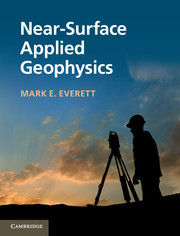Description
Near-Surface Applied Geophysics
Author: Everett Mark E.
A refreshing, up-to-date exploration of the latest developments in near-surface techniques, for advanced-undergraduate and graduate students, and professionals.
Language: English
Subjects for Near-Surface Applied Geophysics:
Approximative price 83.43 €
In Print (Delivery period: 14 days).
Add to cart
Publication date: 04-2013
415 p. · 19.3x25.2 cm · Hardback
415 p. · 19.3x25.2 cm · Hardback
Description
/li>Contents
/li>Biography
/li>
Just a few meters below the Earth's surface lie features of great importance, from geological faults which can produce devastating earthquakes, to lost archaeological treasures. This refreshing, up-to-date book explores the foundations of interpretation theory and the latest developments in near-surface techniques, used to complement traditional geophysical methods for deep-exploration targets. Clear but rigorous, the book explains theory and practice in simple physical terms, supported by intermediate-level mathematics. Techniques covered include magnetics, resistivity, seismic reflection and refraction, surface waves, induced polarization, self-potential, electromagnetic induction, ground-penetrating radar, magnetic resonance, interferometry, seismoelectric and more. Sections on data analysis and inverse theory are provided and chapters are illustrated by case studies, giving students and professionals the tools to plan, conduct and analyze a near-surface geophysical survey. This is an important textbook for advanced-undergraduate and graduate students in geophysics and a valuable reference for practising geophysicists, geologists, hydrologists, archaeologists, and civil and geotechnical engineers.
Preface; Acknowledgments; 1. Introduction; 2. Data analysis; 3. Magnetics; 4. Electrical resistivity method; 5. Induced polarization and self-potential; 6. Seismic reflection and refraction; 7. Seismic surface wave analysis; 8. Electromagnetic induction; 9. Ground-penetrating radar; 10. Emerging techniques; 11. Linear inversion; 12. Nonlinear inversion: local methods; 13. Nonlinear inversion: global methods; Appendix A. Shannon sampling theorem; Appendix B. Solution of Laplace's equation in spherical coordinates; Appendix C. The linear τ-p transformation of seismic data; Appendix D. Horizontal loop over a conducting halfspace; Appendix E. Radar TE waveguide mode equations; References; Index.
Mark Everett is currently the Howard Karren Endowed Professor and Graduate Director in the Department of Geology and Geophysics at Texas A&M University, and was a Guest Professor in 2010 at the Institut für Geophysik, ETH Zurich. He operates the Near-Surface Applied Geophysics laboratory at Texas A&M and has conducted geophysical field work in many locations including the Normandy D-Day landing site in France and on the island of Alcatraz. Dr Everett is on the editorial boards of Geophysics and Geophysical Journal International and has received the Texas A&M College of Geoscience Dean's Research Achievement Award. He is a fellow of the Royal Astronomical Society and a member of the American Geophysical Union and Society of Exploration Geophysicists. Dr Everett is a frequent consultant to the oil and gas, environmental, and geotechnical engineering sectors of industry, holds a professional license to practise geophysics in the State of Texas, and enjoys contributing his time and expertise to local historical archaeological projects.
© 2024 LAVOISIER S.A.S.



